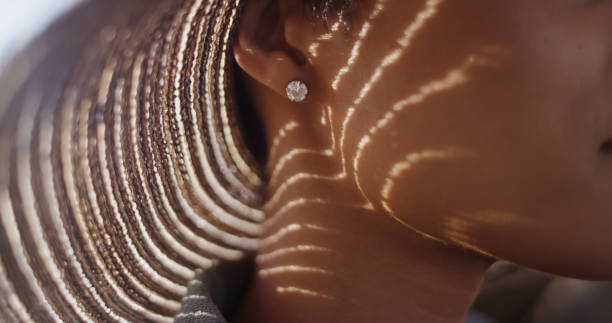The Beauty and Uniqueness of Coral Jewelry All Entries

It's easy to talk about the wide range of jewelry that people consider to be "beautiful." What makes coral so special is its bright happy pinkish-orange color that originates beneath the sea. Coral is actually one of the oldest materials used for jewelry. Part of the attraction to this jewel is its mythical history as a protective stone that wards off evil spirits. Here's a deeper look at why coral jewelry fascinates jewelry lovers.
Where Coral Comes From
Coral is categorized as an organic gemstone, which originates from plants and animals rather than minerals. Pearls and oysters also fall into this category. Coral grows underwater in oceans and seas. It's composed of millions of tiny marine organisms called coral polyps. These creatures live inside protective shells they build themselves.
Coral reefs are formed when polyps secrete calcium carbonate. After the polyps die, they become part of the structure they've built. Their offspring then continue the building project, helping the coral reef to grow. The time it takes to form a coral reef naturally is up to 10,000 years. While the pink-to-red color range is the dominant look of coral reefs marketed for jewelry, white is actually the most common in nature. The rarest coral colors are gold, blue and black.
The global supply of high-quality pink-to-red coral on the market is decreasing due to environmental factors and stricter regulations. Meanwhile, the supply of dyed coral is steadily rising. The most valuable coral today is red from the Mediterranean Sea.
How Gemologists Evaluate Coral
Hue, saturation, size, cut, and polish are the main factors of coral grading by gemologists. Various techniques such as Raman analysis, magnification, and use of acetone can help a gemologist figure out if the color is natural or dyed. Raman analysis is regarded by the Gemological Institute of America (GIA) as the most accurate method for determining authenticity of coral's natural color. It's a technique that determines vibrational energy states of molecules.
If you purchase coral jewelry, make sure that any treatments to enhance color are exposed in documentation. Since coral eventually fades, many owners seek various enhancements, such as dyeing, bleaching and waxing.
Basic Coral Maintenance to Retain Beauty
The main thing to remember about cleaning coral jewelry for retaining its beautiful appearance is to wash it gently with a soft cloth or a toothbrush. Mild soap and water is all you really need to clean off the dirt and dust. Don't use household chemicals or ultrasonic cleaners and be sure to dry the coral completely to avoid water stains.
Keep coral jewelry stored in a dry safe place, such as a jewelry box with a soft interior. It's best not to wear coral jewelry, whether it's rings, earrings, necklaces or bracelets, when engaging in physical activities such as gardening or swimming. To preserve most of the coral's natural color from fading, keep it away from direct light and heat.
Conclusion
The magical appeal of coral revolves around its color, ocean imagery, and mystical associations related to healing, peace, and relaxation. It's also becoming more rare as the value increases. Coral's rich history as jewelry has been around as long as humans, making it a timeless celebration piece. Contact us at Ralph Mueller & Associates to learn more about coral and other gems that convey rare beauty.